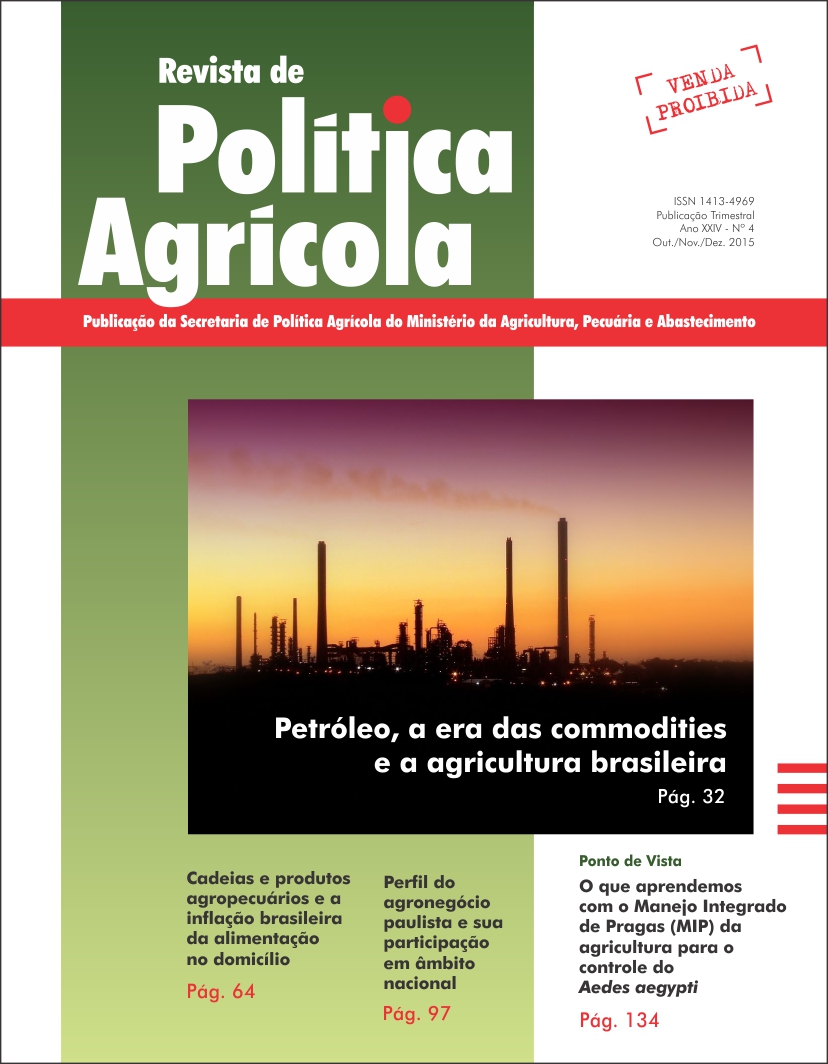Agribusiness of São Paulo and their participation in national economy
Keywords:
employed persons, Gross Domestic Product, national income, added valueAbstract
The economy of the state of São Paulo is in many aspects well developed compared to the rest of Brazil. Regarding the agribusiness sector, the state presents comparative advantages related to its logistics infrastructure and the agroindustry potential plus a strong urbanized consumer market. This study evaluates the size of the state´s agribusiness sector by calculating its Gross Domestic Product (GDP) and its shares in the state´s total GDP and in the Brazilian total agribusiness GDP. This measure is calculated according to the concept of value added at real market prices. GDP is also obtained for the agribusiness segments, that is, for the inputs, farm, agroindustry and services segments. The results indicate that, in 2013, the state´s agribusiness GDP was R$213 billion or 19% of the total Brazilian agribusiness GDP or, yet, 15% of the state´s total GDP. In terms of job creation the agribusiness is responsible for 17% of the formal employment in the state. Disaggregated GDP according to agribusiness segments (for agriculture and livestock) are presented along the paper.Downloads
How to Cite
Silva, A. F., Barros, G. S. de C., Fachinello, A. L., & Castro, N. R. (2016). Agribusiness of São Paulo and their participation in national economy. Revista De Política Agrícola, 24(4), 97–113. Retrieved from https://rpa.sede.embrapa.br/RPA/article/view/1059
Issue
Section
Artigos Científicos


